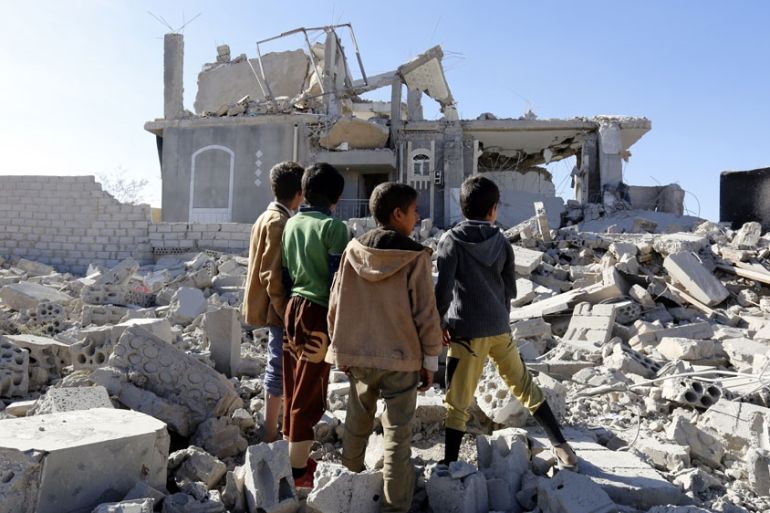There is a hidden inclination to divide Yemen: Ahmad al-Sayyad
Ahmad al-Sayyad, Yemen’s ambassador to UNESCO, sees Saudi-UAE synergy in wake of row over troop deployment to Socotra.

Saudi Arabia and the United Arab Emirates (UAE) are inclined towards a division of Yemen, the country’s ambassador to the UN’s cultural agency has told Al Jazeera.
In an interview on Wednesday, Ahmad al-Sayyad, ambassador and head of Yemen’s permanent delegation to the Paris-based UNESCO, said “there is synergy between the roles of Saudi Arabia and the UAE. There is a hidden inclination to divide Yemen”.
Al-Sayyad’s comments come after a crisis over the island of Socotra, southwest of Yemen.
The UAE deployed 300 soldiers, along with tanks and artillery, to the famed UNESCO World Heritage Site at the beginning of May.
Emirati forces seized all vital institutions there, including the airport, the ports and the government headquarters, according to residents.
The move prompted angry protests.
“We will send an international delegation to Socotra before it turns into a threatened heritage,” al-Sayyad said.
Located east of the Horn of Africa in the Arabian Sea, the island of 60,000 people, known for its unique flora and fauna, has been administered by Yemen for much of the last two centuries.
But since the UAE entered Yemen’s war in March 2015 as part of a Saudi-led coalition seeking to remove Houthi rebels and restore power to President Abd-Rabbu Mansour Hadi, Abu Dhabi has exploited the security vacuum and tried to gain a foothold in the strategically placed island.
On Monday, Ahmed Obeid bin Daghr, Yemen’s prime minister, said the crisis had been resolved.
Coalition goals
Referring to shifting allegiances in Yemen, al-Sayyad said, “after three years now, the coalition still does not know what it wants in Yemen”.
“It’s time to sit down with the Saudi-led coalition and find out what they want in Yemen,” he said.
Yemen and the UAE are allies in the Saudi-led coalition, but relations between the two countries soured as the UAE’s growing influence in southern Yemen raised concerns among Yemeni officials.
Since its launch in 2016, the Southern Transitional Council (STC) – a political movement demanding the secession of southern Yemen – has intensified its demands to secede from the north after receiving considerable patronage and humanitarian assistance from the UAE.
The UAE has set up prisons and armed groups in the region, causing officials of President Abd-Rabbu Mansour Hadi’s government to accuse Emirati troops of behaving like an “occupier”.
Since then, the STC has been accused of fomenting sectarian divisions and hatred in Aden, with a spike in attacks against displaced Yemenis, many of whom fled intense coalition air attacks in the provinces of Taiz, Hodeidah and Sanaa.
Separately, rights group Amnesty International said on Thursday that tens of thousands of civilians were displaced during the Yemeni government’s offensive against Houthi rebels along the country’s western coast, backed by coalition ground troops and warplanes.
After carrying out a field investigation, Amnesty representatives said they were “very worried about what appear to be indiscriminate attacks and other violations of international humanitarian law”.
“They are putting the lives and livelihoods of hundreds of thousands more at risk.”
The report added: “As both sides engaged in fierce clashes, an assortment of munitions, bullets and shrapnel ripped through civilian homes, and Saudi Arabia-led coalition air strikes also killed and injured civilians.”
“Civilians caught in the middle face a range of violations of international humanitarian law by both sides.”